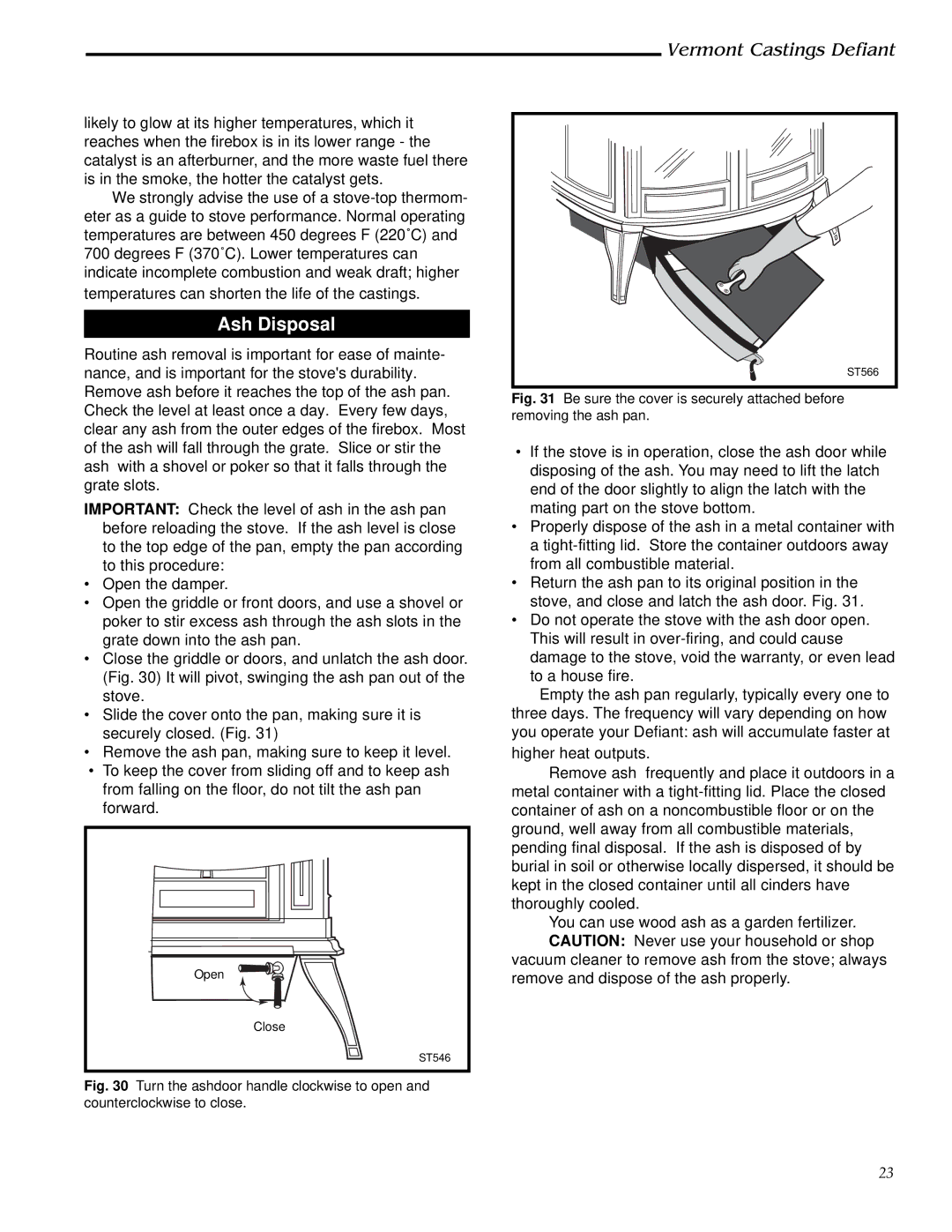
likely to glow at its higher temperatures, which it reaches when the firebox is in its lower range - the catalyst is an afterburner, and the more waste fuel there is in the smoke, the hotter the catalyst gets.
We strongly advise the use of a
Ash Disposal
Routine ash removal is important for ease of mainte- nance, and is important for the stove's durability. Remove ash before it reaches the top of the ash pan. Check the level at least once a day. Every few days, clear any ash from the outer edges of the firebox. Most of the ash will fall through the grate. Slice or stir the ash with a shovel or poker so that it falls through the grate slots.
IMPORTANT: Check the level of ash in the ash pan before reloading the stove. If the ash level is close to the top edge of the pan, empty the pan according to this procedure:
•Open the damper.
•Open the griddle or front doors, and use a shovel or poker to stir excess ash through the ash slots in the grate down into the ash pan.
•Close the griddle or doors, and unlatch the ash door. (Fig. 30) It will pivot, swinging the ash pan out of the stove.
•Slide the cover onto the pan, making sure it is securely closed. (Fig. 31)
•Remove the ash pan, making sure to keep it level.
•To keep the cover from sliding off and to keep ash from falling on the floor, do not tilt the ash pan forward.
Open
Close
ST546
Fig. 30 Turn the ashdoor handle clockwise to open and counterclockwise to close.
Vermont Castings Defiant
ST566
Fig. 31 Be sure the cover is securely attached before removing the ash pan.
•If the stove is in operation, close the ash door while disposing of the ash. You may need to lift the latch end of the door slightly to align the latch with the mating part on the stove bottom.
•Properly dispose of the ash in a metal container with a
•Return the ash pan to its original position in the stove, and close and latch the ash door. Fig. 31.
•Do not operate the stove with the ash door open. This will result in
Empty the ash pan regularly, typically every one to
three days. The frequency will vary depending on how you operate your Defiant: ash will accumulate faster at higher heat outputs.
Remove ash frequently and place it outdoors in a metal container with a
You can use wood ash as a garden fertilizer. CAUTION: Never use your household or shop
vacuum cleaner to remove ash from the stove; always remove and dispose of the ash properly.
23
